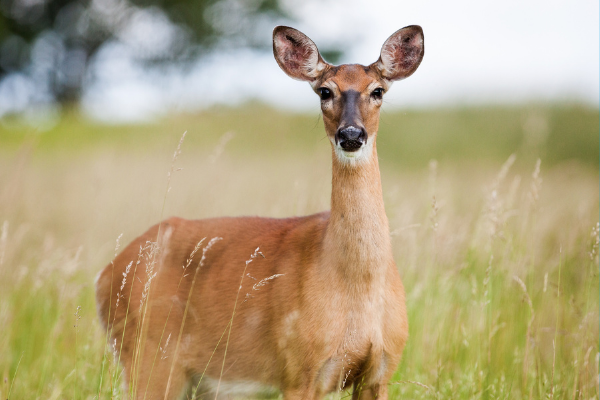The Franklin Farms Foundation mega subdivision in Virginia plans to slaughter deer this fall and winter. Distressed residents have turned to FoA for help in stopping this inhumane scheme. The appaling announcement recites the non-scientific excuses for killing deer—human health risks, overconsumption and road accidents. Ironically this plan has the support of the foundation’s Open Space Committee. Open spaces are supposed to be places where nature is in charge of nature and biodiversity is celebrated. If deer aren’t safe in the 182 acres of open space at Franklin Farms, where are they supposed to live? Tell the executive director you oppose the plan by emailing her at foundation@franklinfarm.org. You can use these talking points:
● Overabundant deer are being accused of “stripping forestland of low growing vegetation and reducing small mammal and bird diversity.” We advocate for non-lethal methods to protect areas from heavy browsing, like fencing that can inconspicuously protect sensitive plants inside the subdivision.
●It’s worth noting that rodents are among the most common small mammals. And some of these small mammals – the white-footed mouse in particular – have been implicated as serious reservoirs for Lyme’s disease. The Board of Trustees and Open Space Commission’s obsession with hunting is preventing them from considering the latest research about Lyme disease, such as the study conducted at Penn State University showing that deer exclusion in smaller areas is likely to amplify ticks and produce tick-borne disease hotspots where rodents are ubiquitous.
●The Cary Institute of Ecosystem Studies in New York has found that white-footed mice are the most important hosts in producing infected ticks. Eastern chipmunks and both short-tailed shrews and masked shrews also produce quite a few infected ticks. Pretty much all the other wildlife studied, including gray squirrels, red squirrels, flying squirrels, opossums, raccoons, skunks, deer, robins, and wood thrush, are much less important in producing infected ticks. These animals kill lots of ticks when they groom themselves, and the ticks that do survive and successfully feed on them do not get infected. So, these species may largely play protective roles when it comes to human risk of Lyme disease.
●Hunting deer will not mean less car/deer collisions either. Friends of Animals has surveyed state wildlife departments regarding incidents in which drivers hit deer. Findings indicate that shooting deer exacerbates the movement of deer during the mating season. Notably, our study found a significant increase in the number of deer hit by cars during hunting season: October, November and December.

